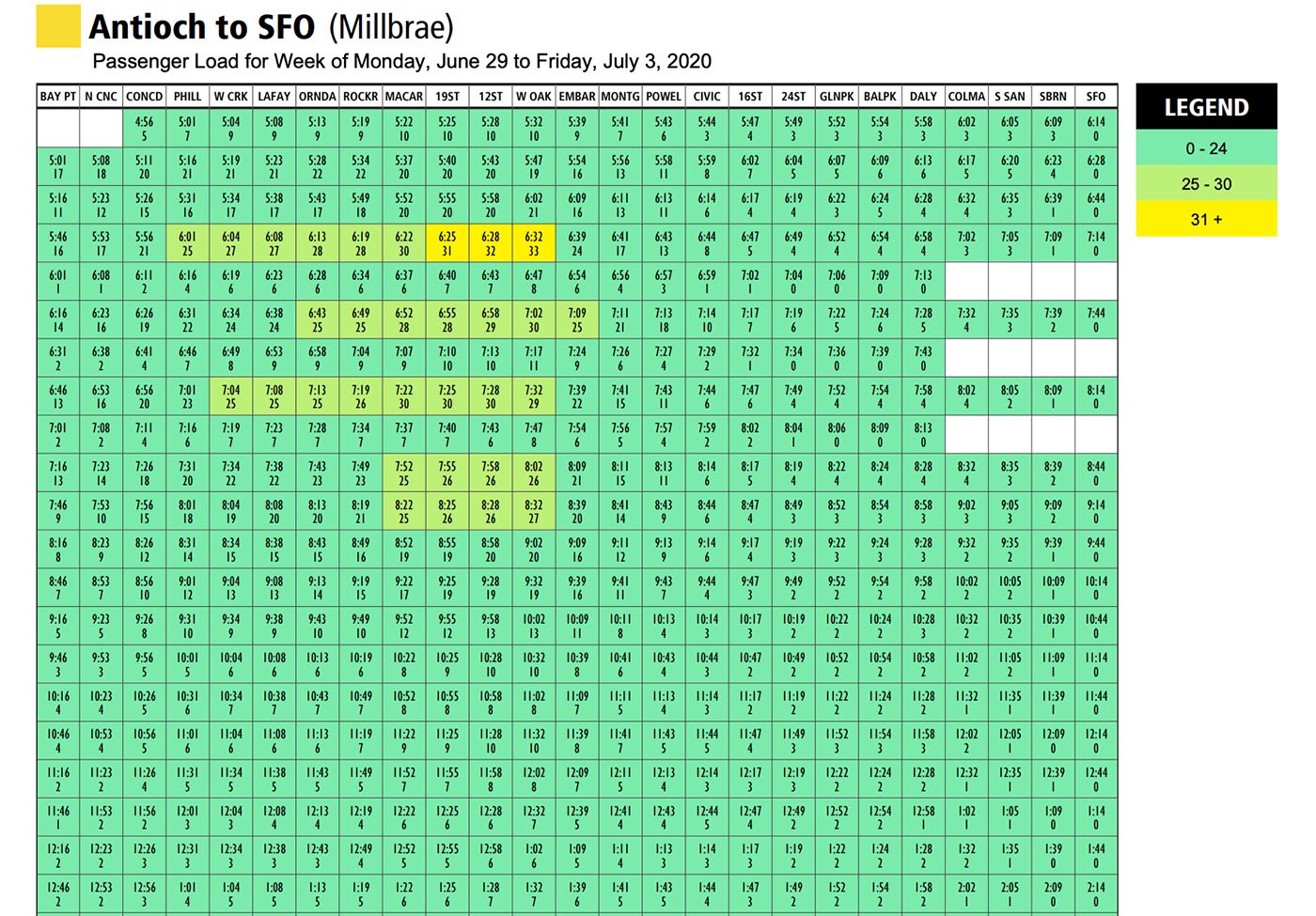As part of its process to encourage people to start using BART to commute around the Bay again, the transit agency is now publishing load charts for all trains, showing which are the least and most crowded.
BART remains 89 percent below its normal ridership levels despite some businesses reopening across the five counties that it serves. But there are a few rush-hour trains that are seeing averages of 31 or more people per car, and if riders want emptier trains, it's typically just a matter of riding about 20 minutes earlier or later.
The figures of average riders per car is based on fare gate data, as BART explains in a release, and they do not have any way to provide real-time data of actual riders per car. "In practice, you’ll find more passengers on the middle cars, and fewer on the front and rear cars of a train," the agency writes, as if every commuter is not already familiar with this pattern.
The new charts use a three-color coding system to show crowding, with sea foam green indicating an average of 24 or fewer passengers per train; lime green is an average of 25-30 riders; and yellow is 31 or more. And a sampling of the charts find the majority are a sea of sea foam green, with just a few early morning trains coming up yellow.
As a for instance, here's the chart for the Antioch to Millbrae line, showing predicted averages for this week.

Most of the other train lines have low ridership all day long, with averages below 24 passengers per car — and the charts are all sea foam green. Those include the lines servicing the new Milpitas and Berryessa/North San Jose stations, and the Daly City-Pleasanton line as shown below.

BART laid out a 15-point plan in late May to "welcome back" riders to the system, which included assurances that trains cars are getting thorough cleanings every night, and that there would be more longer (10-car) trains running in order to allow for more distancing space.
That plan included data transparency as Step 11, which includes publishing these load charts, in order to "provide a snapshot of what riders can expect on-board trains during the COVID-19 pandemic."
The charts for each train line, which will be updated weekly, can all be found here.
Related: BART's 15-Point 'Welcome Back' Plan Includes Personal Hand Straps, Electrostatic Fog Treatments

